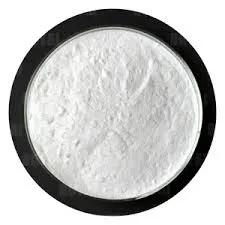
Nov . 02, 2024 12:23 Back to list
hydroxyethyl cellulose manufacturing process
Hydroxyethyl Cellulose Manufacturing Process
Hydroxyethyl cellulose (HEC) is a non-ionic cellulose ether that serves various applications across different industries, including pharmaceuticals, cosmetics, food, and construction. Its thickening, emulsifying, and film-forming properties make it an integral ingredient in many formulations. The manufacturing process of hydroxyethyl cellulose can be divided into several key steps sourcing of raw materials, etherification, purification, drying, and milling.
1. Sourcing of Raw Materials
The primary raw material for hydroxyethyl cellulose production is cellulose, which is typically derived from sources like wood pulp or cotton linters. The quality of cellulose used significantly affects the properties of the final product. Higher purity cellulose will yield a more effective HEC with better performance characteristics. Other essential raw materials include ethylene oxide, which serves as the etherifying agent, and a catalyst, often sodium hydroxide, to facilitate the reaction.
2. Etherification Process
The etherification process is where cellulose is modified to create hydroxyethyl cellulose. This step takes place in a controlled environment, generally within a high-temperature and high-pressure vessel. First, cellulose is dissolved in an appropriate solvent, which helps to enhance the reactivity of the cellulose chains. The catalyst, such as sodium hydroxide, is then added to activate the cellulose.
Next, ethylene oxide is introduced into the reaction mix. During etherification, the hydroxyl groups (-OH) on the cellulose polymer chains react with ethylene oxide, leading to the substitution of hydroxyethyl groups (-OCH2CH2OH) onto the cellulose backbone. This step requires precise control over temperature, pressure, and reaction time to ensure the correct degree of substitution and the desired molecular weight of the HEC product.
hydroxyethyl cellulose manufacturing process

3. Purification
Following the etherification reaction, the resulting mixture contains unreacted raw materials, by-products, and the desired hydroxyethyl cellulose. Purification involves neutralizing the reaction mixture with an acid, typically acetic acid, to deactivate any remaining catalyst. Subsequently, the product is washed several times with water or alcohol to remove impurities and unreacted substances. Proper purification is crucial as it not only enhances the quality but also the performance of HEC in applications.
4. Drying
Once purified, the hydroxyethyl cellulose solution is then concentrated and dried. The drying process can involve spray drying or drum drying, depending on the desired final product form. This stage reduces the moisture content to a level that is suitable for long-term storage and handling. Careful control of drying conditions ensures that HEC maintains its properties and does not degrade during this phase.
5. Milling
The dried hydroxyethyl cellulose is then milled into a fine powder. Milling transforms the product into a form that is easy to handle, transport, and incorporate into various formulations. The particle size can be tailored to meet specific requirements of different applications.
In conclusion, the manufacturing process of hydroxyethyl cellulose involves the careful sourcing of raw materials, a controlled etherification reaction, followed by purification, drying, and milling. Each step is critical in ensuring that the final product exhibits the desired properties for its wide variety of uses. As industries continue to innovate, hydroxyethyl cellulose remains a versatile and invaluable ingredient in many formulations.
-
tile-bonding-additives-for-stronger-bonds
NewsAug.22,2025
-
construction-grade-rdp-for-wholesale-needs
NewsAug.22,2025
-
trusted-wholesale-hec-partners
NewsAug.22,2025
-
hec-solutions-for-industrial-excellence
NewsAug.22,2025
-
construction-additives-need-hpmc-essentials
NewsAug.22,2025
-
hpmc-versatile-cellulose-ether-for-industries
NewsAug.22,2025







